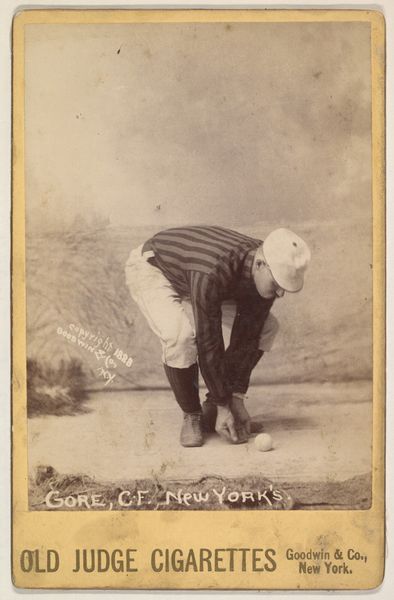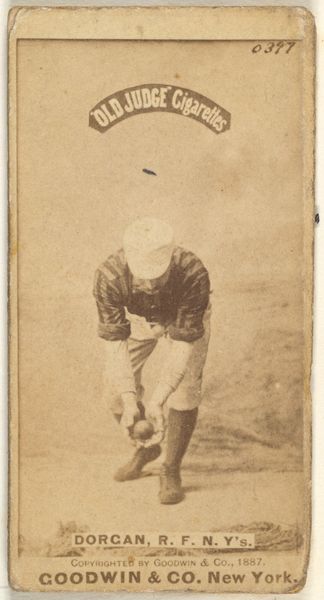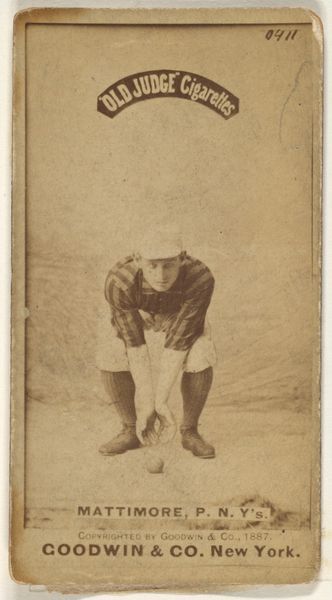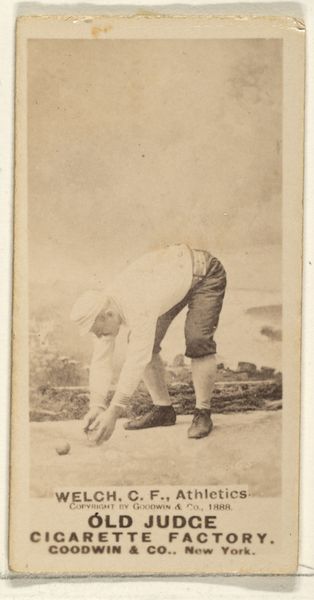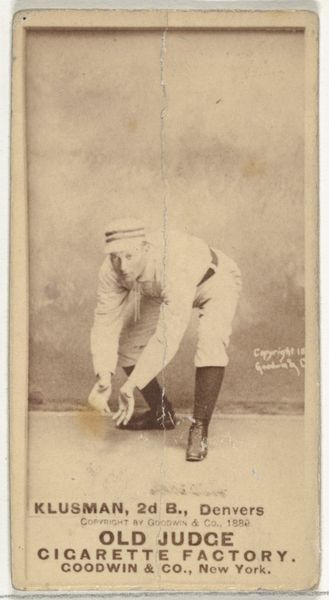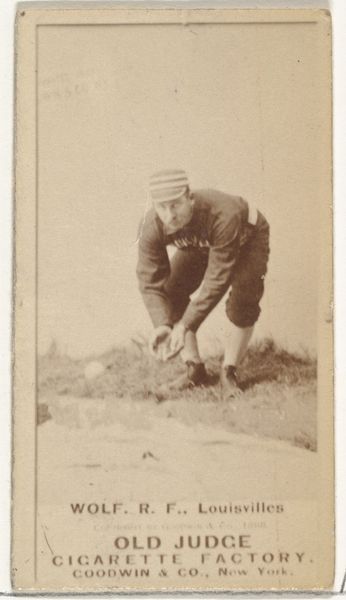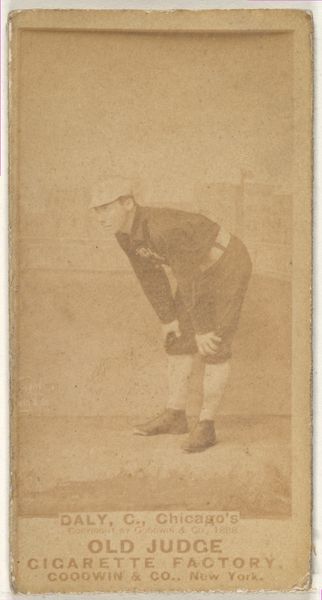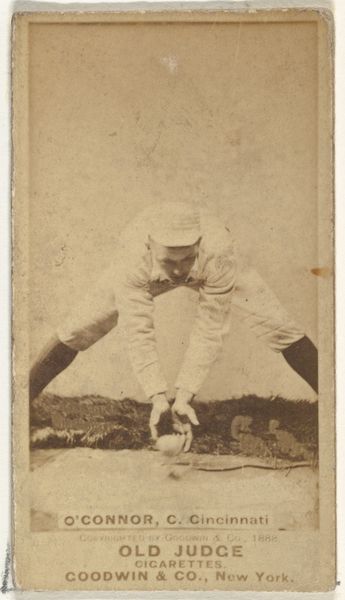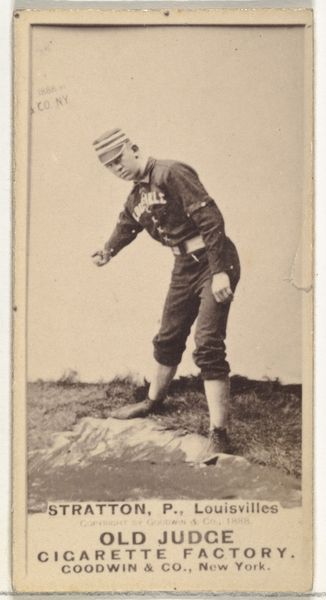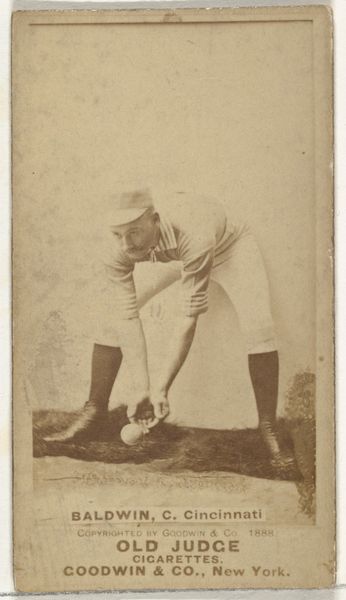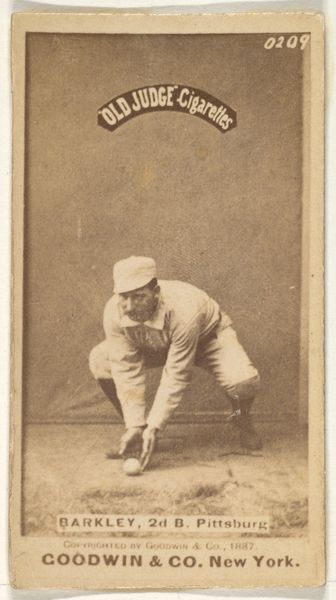
George F. "Piano Legs" Gore, Center Field, New York, from the Old Judge series (N172) for Old Judge Cigarettes 1887
0:00
0:00
lithograph, print, photography
#
portrait
#
lithograph
# print
#
baseball
#
photography
#
coloured pencil
#
orientalism
#
19th century
#
men
Dimensions: sheet: 2 11/16 x 1 3/8 in. (6.9 x 3.5 cm)
Copyright: Public Domain
Curator: This baseball card featuring George F. "Piano Legs" Gore, dating back to 1887, is part of the "Old Judge" series by Goodwin & Company. Instantly, one notices the image feels strangely intimate and immediate, not what you would anticipate from a historical artifact tied to commercial promotion. Editor: There is something captivating in the greyscale tones contrasted against his striking uniform, however—I find myself focusing on the processes behind these mass-produced cards; they weren't just capturing an image, but translating it into a repeatable material form for consumption. Curator: Precisely. This lithograph provides a valuable glimpse into late 19th-century culture, sports, and consumerism. Gore, a center fielder for New York, stands poised, hands seemingly frozen as he positions a ball. We see in this image so much more: issues around celebrity, and the commercial exploitation of athletes by a burgeoning industry. Editor: Consider too the cigarette company. It really is an exercise in using images to create desire and dependency. By focusing on how lithography reproduced Gore's image countless times and understanding the financial incentives surrounding it, we can recognize that art is not made in a vacuum—it is generated under distinct constraints with intended aims. Curator: That relationship of constraints reveals so much, influencing visual aesthetics, subject selection, and distribution strategies. But how does this baseball card play into the era's cultural narrative, in an epoch grappling with industrialization and changing social roles? Was baseball idealized as an embodiment of fair play in response to increasingly apparent capitalist excess? Editor: Absolutely, and in addition, baseball's surging popularity must have impacted how Goodwin & Co distributed these portraits. These cards are artifacts of industry: we must reflect critically on how material realities and capitalist agendas can change what is created, exchanged, and then, preserved and canonized as art. Curator: Yes, a mass produced token meant for discard is recontextualized as both a rare and valuable cultural and historical record. I hadn't quite thought of the journey of an item as tied so immediately to something to be disposed of. Editor: To think about these cards simply as "art" would ignore its original intention. Appreciating their material story deepens our understanding and encourages critical insight into art history itself.
Comments
No comments
Be the first to comment and join the conversation on the ultimate creative platform.

